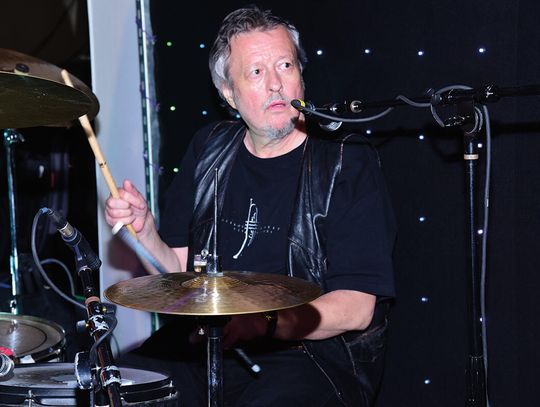The Warsaw Institute Foundation to pierwszy polski geopolityczny think tank w Stanach Zjednoczonych. Strategicznym celem tej organizacji jest wzmocnienie polskich interesów w USA przy jednoczesnym wspieraniu unikalnego sojuszu między dwoma narodami. Jej działalność koncentruje się na takich zagadnieniach jak geopolityka, porządek międzynarodowy, polityka historyczna, energetyka i bezpieczeństwo militarne. The Warsaw Institute Foundation została założona w 2018 roku i jest niezależną organizacją non-profit, inspirowaną bliźniaczą organizacją działającą w Polsce – Warsaw Institute. The Warsaw Institute Foundation is Poland's first geopolitical think tank in the United States. The strategic goal of this organisation is to bolster Polish interests in the U.S. while supporting the unique alliance between the two nations. Its activity focuses on such issues as geopolitics, international order, historical policy, energy, and military security. Established in 2018, The Warsaw Institute Foundation is an independent, non-profit organization inspired the twin Poland-based Warsaw Institute.
W ostatnich dniach grudnia rosyjski rząd przyjął nowy Plan rozwoju infrastruktury Północnej Drogi Morskiej, obliczony na okres do 2035 roku. Jego realizacja ma stanowić kolejny krok na drodze do osiągnięcia stawianego przez władze na Kremlu celu: jak najszybszej popularyzacji szlaku transportowego wzdłuż wybrzeży Arktyki i uczynienia z niego konkurencyjnej alternatywy dla Kanału Sueskiego.
Północna Droga Morska to morski korytarz komunikacyjny, wiodący wzdłuż arktycznego wybrzeża Federacji Rosyjskiej. Wolumen towarów transportowanych tym szlakiem pozostaje póki co niewielki – to zaledwie 27-28 mln t/r, z czego lwia część przypada na miejscowe wydobycie i produkcję surowców (LNG, ropa), zaś tranzyt towarów pozostaje na poziomie niższym, niż 1 mln t/r. Mimo to Rosjanie liczą, że sytuacja ta, wraz z topnieniem pokrywy lodowej i spadkiem kosztów transportu, zacznie szybko się zmieniać. Zgodnie z rosyjskimi założeniami strategicznymi, już w 2024 r. transport towarów miałby osiągnąć poziom 80 mln t/r, a następnie 120 mln t/r w 2030 r i docelowo – 160 mln t/r w 2035 r. Nawet pomimo tego, że jak na razie światowi armatorzy pozostają raczej ostrożni, co do tempa, w jakim arktyczny fracht może zyskiwać na opłacalności.
Skąd tak ambitne plany Rosjan? Zmiany klimatyczne w coraz to większym stopniu „otwierają” obszar arktyczny na działalność człowieka, a topnienie pokrywy lodowej w wodach Arktyki sprawia, że możliwym staje się transport towarów – w tym nawet bez asysty specjalnych (i zarazem bardzo drogich w użyciu) lodołamaczy. W tym kontekście Federacja Rosyjska spodziewa się, że docelowo Północna Droga Morska będzie mogła konkurować z Kanałem Sueskim, jako o 1/3 krótsza trasa morska między Europą a Azją. To oczywiście pozwalałoby Moskwie czerpać rozliczne korzyści: rozumiane zarówno w kategoriach gospodarczych, jak i geostrategicznych. Co więcej, rozwój koncepcji Północnej Drogi Morskiej w naturalny sposób implikowałby również korzyści dla lądowych obszarów Federacji Rosyjskich, położonych na dalekiej północy. Obecnie tereny te, z obiektywnych przyczyn geograficzno-klimatycznych, pozostają słabo rozwinięte i zintegrowane
Co zakłada nowo przyjęty dokument?
W nowo przyjętym Planie rozwoju infrastruktury Północnej Drogi Morskiej zwraca uwagę to, że koncepcja ta jest traktowana w sposób całościowy, holistyczny – zakłada się bowiem nie tylko rozbudowę floty lodołamaczy, czy terminali przeładunkowych. Jednocześnie powstawać mają nowe drogi, magistrale kolejowe, czy infrastruktura elektroenergetyczna/telekomunikacyjna, jak również modernizowane mają być lotniska. Co więcej, przewiduje się także rozwój systemów kontroli i monitoringu – chociażby uruchomiony ma być program Arktika-M, zakładający wystrzelenie na orbitę dedykowanych temu celowi sond.
Założenia zawarte w omawianym planie są ambitne, jednak należy pamiętać o jednej dodatkowej kwestii. Część pozycji w ramach ww. dokumentu zakłada jedynie opracowanie dalszych materiałów planistycznych lub np. zbadanie opłacalności danego rozwiązania. I tak np., w Planie rozwoju... mowa jest nie o budowie magistrali kolejowych, ale o np. „aktualizacji projektu budowy” czy „włączeniu projektu w plan modernizacji i rozbudowy”. Dość powiedzieć, że na 84 działań przewidzianych w treści opracowania, aż 45 z nich ma docelowo zakończyć się nie zrealizowaniem konkretnego zadania inwestycyjnego, ale… przedstawieniem dedykowanego raportu pod dalsze prace rządu Federacji Rosyjskiej.
Następny krok: Ustawa o Arktyce
Kolejnym istotnym dokumentem, jaki ma zostać przyjęty w kolejnych miesiącach w odniesieniu do obszaru arktycznego Federacji Rosyjskiej, ma być Ustawa o Arktyce, która według zapowiedzi trafi pod obrady Dumy Państwowej jeszcze w I kwartale 2020 roku. Ma ona zakładać szereg preferencji i ułatwień dla tych podmiotów, które chcą inwestować w Arktyce. W szczególności rzecz ma przy tym iść o pięć kategorii aktywności: 1) projektach wydobywczych na szelfie kontynentalnym, 2) produkcji skroplonego gazu ziemnego (LNG) oraz zakładach chemicznych, 3) nowych projektach naftowych, 4) inwestycjach na tzw. trudno dostępnych złożach surowcowych oraz 5) projektach małych i średnich przedsiębiorstw w sektorach innych, niż wydobywczy.
Według wstępnych obliczeń rosyjskich władz, nowe rozwiązania mają przełożyć się na realizację do 2035 roku inwestycji o łącznej wartości, bagatela, ok. 216 miliardów EUR. W założeniu, oprócz znaczenia dla sektora energetycznego/wydobywczego, nowe regulacje pośrednio będą musiały przekładać się na wzrost aktywności na Północnej Drodze Morskiej. Produkowane na Dalekiej Północy surowce, ale także (w dużo mniejszym stopniu) inne rodzaje towarów przeznaczone na eksport, będą bowiem mogły być odprawiane właśnie drogą morską.
***
Podejmowane przez Rosjan działania w odniesieniu do Północnej Drogi Morskiej będą zapewne sprzyjały wzrostowi przewozu rosyjskich towarów tym szlakiem transportowym, rozwiną także obszary lądowe w Arktyce. Mimo to wydaje się jednak, że nie będą mogły one mieć decydującego wpływu w innym, kluczowym, aspekcie: nie przyciągną one zagranicznych graczy, by decydowali się na tranzyt u rosyjskich wybrzeży w Arktyce. Największe nawet inwestycje Rosjan nie zmienią tego, że do uczynienia z Północnej Drogi Morskiej pełnoprawnego szlaku handlowego na skalę globalną potrzeba czego innego: czasu, który doprowadzi do dalszego topnienia pokrywy lodowej w regionie.
Mateusz Kubiak
absolwent Studiów Wschodnich i Stosunków Międzynarodowych na Uniwersytecie Warszawskim. Pracuje jako analityk sektora energetycznego, zajmuje się również zawodowo regionem Kaukazu i Azji Centralnej.
The Warsaw Institute Foundation to pierwszy polski geopolityczny think tank w Stanach Zjednoczonych. Strategicznym celem tej organizacji jest wzmocnienie polskich interesów w USA przy jednoczesnym wspieraniu unikalnego sojuszu między dwoma narodami. Jej działalność koncentruje się na takich zagadnieniach jak geopolityka, porządek międzynarodowy, polityka historyczna, energetyka i bezpieczeństwo militarne. The Warsaw Institute Foundation została założona w 2018 roku i jest niezależną organizacją non-profit, inspirowaną bliźniaczą organizacją działającą w Polsce – Warsaw Institute. The Warsaw Institute Foundation is Poland's first geopolitical think tank in the United States. The strategic goal of this organisation is to bolster Polish interests in the U.S. while supporting the unique alliance between the two nations. Its activity focuses on such issues as geopolitics, international order, historical policy, energy, and military security. Established in 2018, The Warsaw Institute Foundation is an independent, non-profit organization inspired the twin Poland-based Warsaw Institute.
The Warsaw Institute Foundation to pierwszy polski geopolityczny think tank w Stanach Zjednoczonych. Strategicznym celem tej organizacji jest wzmocnienie polskich interesów w USA przy jednoczesnym wspieraniu unikalnego sojuszu między dwoma narodami. Jej działalność koncentruje się na takich zagadnieniach jak geopolityka, porządek międzynarodowy, polityka historyczna, energetyka i bezpieczeństwo militarne. The Warsaw Institute Foundation została założona w 2018 roku i jest niezależną organizacją non-profit, inspirowaną bliźniaczą organizacją działającą w Polsce – Warsaw Institute. The Warsaw Institute Foundation is Poland's first geopolitical think tank in the United States. The strategic goal of this organisation is to bolster Polish interests in the U.S. while supporting the unique alliance between the two nations. Its activity focuses on such issues as geopolitics, international order, historical policy, energy, and military security. Established in 2018, The Warsaw Institute Foundation is an independent, non-profit organization inspired the twin Poland-based Warsaw Institute.
Reklama











